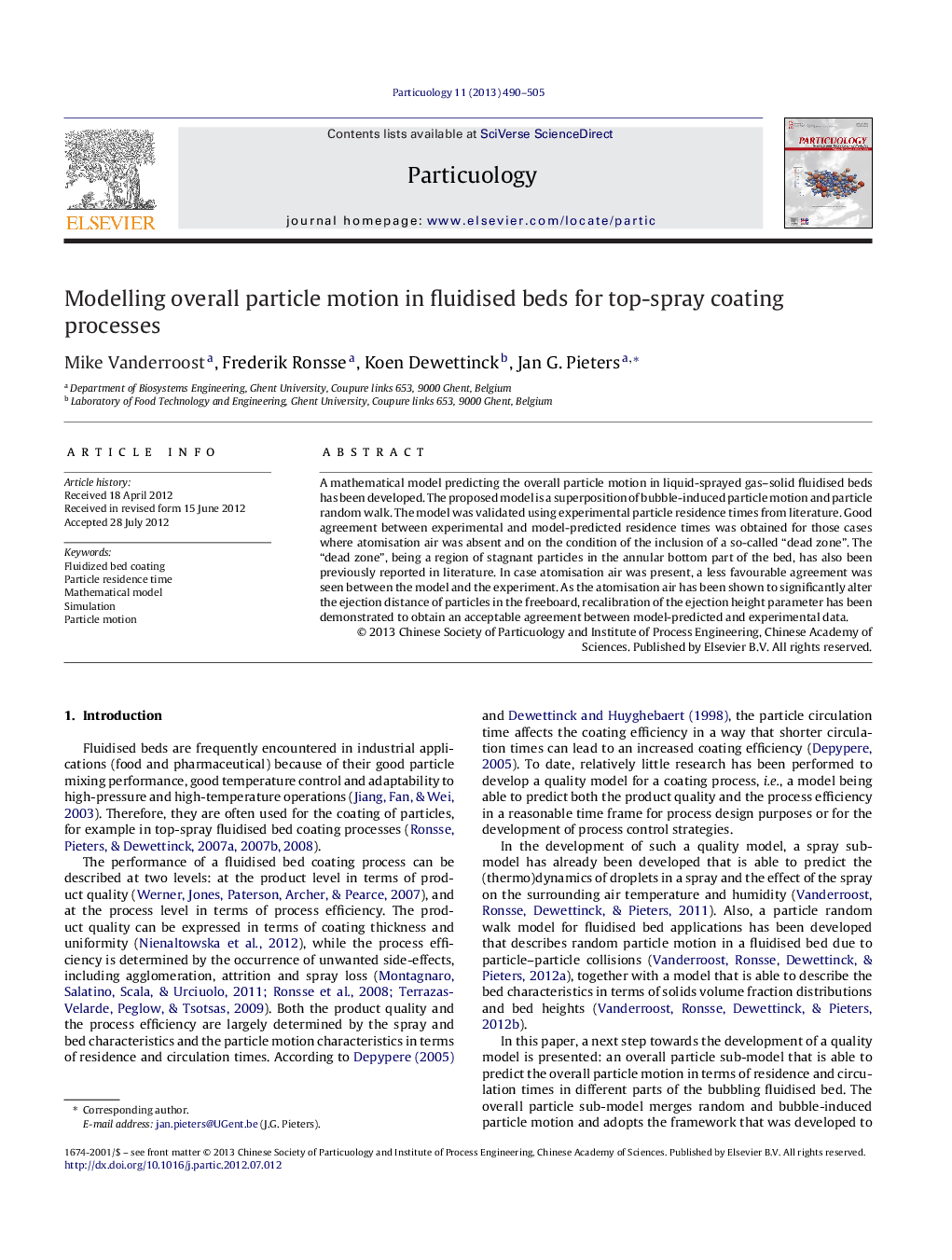| Article ID | Journal | Published Year | Pages | File Type |
|---|---|---|---|---|
| 672101 | Particuology | 2013 | 16 Pages |
•Model to describe particle motion in top-spray fluidised bed coating reactor was presented.•Trajectories of the particles were simulated.•Validation by means of residence times in different sections of the bed was carried out.•Simulated results fell within the range of experimental results.
A mathematical model predicting the overall particle motion in liquid-sprayed gas–solid fluidised beds has been developed. The proposed model is a superposition of bubble-induced particle motion and particle random walk. The model was validated using experimental particle residence times from literature. Good agreement between experimental and model-predicted residence times was obtained for those cases where atomisation air was absent and on the condition of the inclusion of a so-called “dead zone”. The “dead zone”, being a region of stagnant particles in the annular bottom part of the bed, has also been previously reported in literature. In case atomisation air was present, a less favourable agreement was seen between the model and the experiment. As the atomisation air has been shown to significantly alter the ejection distance of particles in the freeboard, recalibration of the ejection height parameter has been demonstrated to obtain an acceptable agreement between model-predicted and experimental data.
Graphical abstractSimulated vertical particle displacement.Figure optionsDownload full-size imageDownload as PowerPoint slide
